Roger Maris: Yankees legend who dethroned Ruth as home run king

Rav
More Stories By Rav
- Mother’s Day: How Anthony Volpe’s mom molded him into a Yankee phenom
- Yankees’ Oswaldo Cabrera admits mistake in ninth-inning pitch clock violation: ‘It’s my fault’
- Boone confirms Anthony Rizzo’s likely Sunday activation for Yankees
- Yankees 5-6 Cardinals: Stanton’s near Grand Slam falls short as St. Louis earn first-ever win at new Yankee Stadium
- Wait by ex-Yankees player for Topps Card face change nears five decades
- December 3, 2023
- 4:40 am
- No Comments
Table of Contents
| Position | Right Fielder |
| Active years | 1957 to 1968 |
| Teams (years) | Cleveland Indians (1957–1958)Kansas City Athletics (1958–1959)New York Yankees (1960–1966)St. Louis Cardinals (1967–1968) |
| Draft | 1953 |
| Debut | April 16, 1957 |
| Last game | September 29, 1968 |
| Date of Birth | September 10, 1934 |
| Native place | Hibbing, Minnesota |
| Batted | Left |
| Threw | right |
| All-Star | 7× All-Star (1959–1962) |
| World Champions | 3× World Series champion (1961, 1962, 1967) |
| AL MVP | 2× AL MVP (1960, 1961) |
| Shirt retired | Yankees No. 9 |
| Hall of Fame year | Not yet as of 2023 |
| MLB Awards | Gold Glove Award (1960) |
| AL Home Run Leader (1961)MLB Player of the Year (1961) | |
| 2x AL RBI Leader (1960,1961) | |
| Legacy | Monument Park honoree AL Home Run Leader from 1961 to 2022) |
| Nickname | “Rajah” |
The Bio
Roger Maris is most prominently celebrated for his extraordinary achievement in 1961 when he shattered the long-standing MLB single-season home run record by belting an astonishing 61 home runs. This remarkable feat stood uncontested until 1998 and remained the American League (AL) record until Aaron Judge finally eclipsed it in 2022.
However, the story of Roger Maris goes beyond statistics. His monumental success in 1961 not only etched his name in baseball history but also imposed a personal struggle that often overshadowed his overall career. His career was characterized by unwavering contributions to a series of League and World Championship teams. Throughout the 1960s, Roger Maris made consistent and crucial contributions to teams in both leagues, and these achievements are just as noteworthy as any of his record-breaking home runs.
Roger Maris embarked on his baseball journey in the minor leagues, playing from 1953 to 1956, and then made his major league debut with the Cleveland Indians in 1957. After a brief stint with the Kansas City Athletics during the 1958 season, he was traded to the New York Yankees at the conclusion of the 1959 season. Roger Maris concluded his playing career as a member of the St. Louis Cardinals in 1967 and 1968. His excellence on the field was acknowledged through numerous accolades, including being selected as an AL All-Star from 1959 through 1962, earning the prestigious AL Most Valuable Player award in 1960 and 1961, and achieving an AL Gold Glove Award in 1960. Remarkably, Roger Maris also participated in seven World Series, making significant contributions to the Yankees’ World Series victories in 1961 and 1962, and later securing another championship with the Cardinals in 1967.
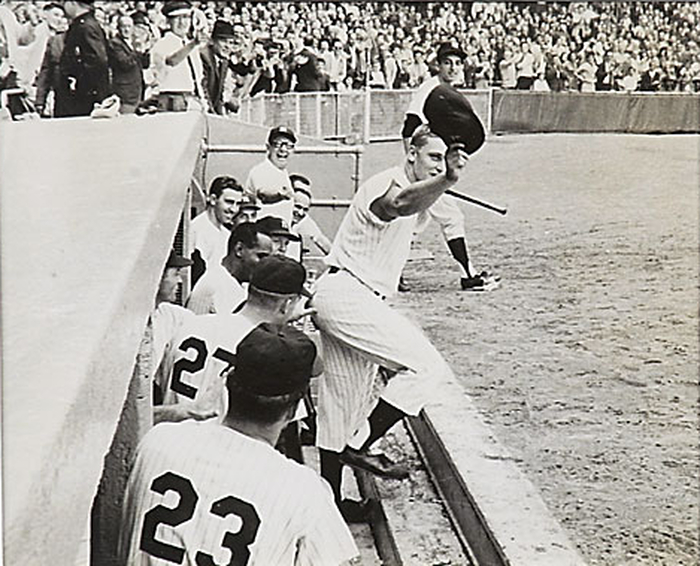
In 1998, MLB witnessed the establishment of a new home run record when Mark McGwire launched an astounding 70 home runs. Simultaneously, Sammy Sosa also surpassed Roger Maris’ record with 66 home runs. Subsequently, in 2001, Barry Bonds shattered that mark with an astonishing 73 home runs. It’s important to note that all three of these players were associated with the use of performance-enhancing drugs, which cast a shadow over their achievements during the PED era. Despite these subsequent developments, Roger Maris’ AL single-season home run record endured until 2022 when Aaron Judge achieved the remarkable feat of hitting 62 home runs in a single season for the New York Yankees.
Early life and career of Roger Maris
Born on September 10, 1934, in Hibbing, Minnesota, Roger Eugene Maris began his remarkable journey through life. At the age of 12, his family made a pivotal move to Fargo, North Dakota, a moment that ignited his deep passion for baseball. In Fargo, young Roger enthusiastically embraced the world of Little League and American Legion baseball. It was abundantly clear that he possessed an extraordinary talent on the field, leading his American Legion team to a state championship and earning the distinguished title of Most Valuable Player.
Roger Maris continued to expand his horizons at Shanley High School, participating in football, basketball, and track. Notably, he achieved a feat that still stands as a remarkable national record to this day – returning four kickoffs for touchdowns in a single football game, forever etching his name into the annals of the sport.
Roger Maris quickly became a local athletic legend, and his football prowess even earned him a scholarship to the University of Oklahoma. However, he soon realized that college life wasn’t his true calling. His unwavering passion and commitment were redirected toward baseball, a pivotal decision that would leave an indelible mark on the world of sports.
As a standout in American Legion baseball, Roger Maris’ extraordinary all-around performance drew the keen attention of numerous scouts. He embarked on his professional baseball journey within the Cleveland Indians organization, initially assigned to their Fargo-Morehead club in the Northern League in 1953. In the following year, his undeniable talent earned him a promotion to the Keokuk Kernels in Iowa. It was in Keokuk that Roger Maris showcased his versatility, tying a Three-I League single-season record for put-outs by an outfielder in 1954, all while maintaining an impressive batting average of .303. This period in Keokuk was transformative for Roger Maris, as he transitioned from being a contact hitter to a power hitter, thanks to the guidance of his manager, Jo-Jo White. This transformation ultimately unleashed his potential as a history-making force in the world of baseball.
In 1955, his family made the official decision to change their Croatian surname to Maris, a choice that the 20-year-old minor league player wholeheartedly embraced. He had grown tired of opposing fans crafting unflattering rhymes with his original name, particularly those involving the word “ass.”
During his initial minor league season, Roger Maris struggled to make a mark, hitting only nine home runs. However, in the years spanning from 1954 through 1956, he experienced a remarkable surge, amassing an impressive total of 69 home runs, clearly demonstrating his growing power at the plate. Roger Maris’ contributions played a pivotal role in leading the Indianapolis Indians to victory in the 1956 Junior World Series.
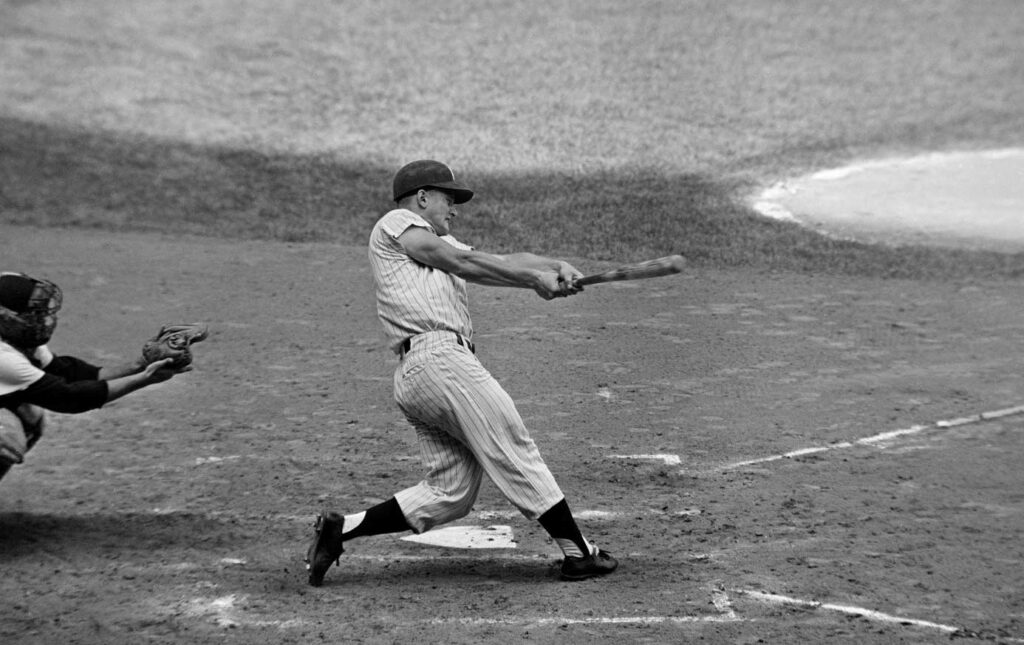
Following this triumph, and with the anticipation of a call-up to the major league club the following spring, Roger Maris tied the knot with his high school sweetheart, Pat Carvell, on October 13, 1956. Together, they would go on to raise a family of six children, consisting of four boys and two girls. This tight-knit family would become an unwavering source of support and strength for Roger Maris throughout the various challenges he would face in his illustrious career. Little did he know that he stood on the brink of making a significant impact on the major league baseball scene.
MLB debut of Roger Maris
On April 16, 1957, Roger Maris embarked on his major league journey with the Cleveland Indians. Just two days later, he etched his name into the annals of baseball history by launching his first career home run, a grand slam off Tigers pitcher Jack Crimian at Briggs Stadium in Detroit. His rookie season concluded with a respectable tally of 14 home runs, offering a glimpse of the great potential he possessed.
Fast forward to June 15, 1958, after 51 games and nine home runs for the Indians, Roger Maris found himself at the center of a pivotal trade. The Kansas City Athletics, who would soon become his new team, acquired him along with Dick Tomanek and Preston Ward, in exchange for Vic Power and Woodie Held.
In his inaugural season with the Kansas City Athletics in 1958, Roger Maris made his presence felt, participating in 99 games and smacking 19 home runs. However, 1959 presented its share of challenges as he battled through 122 games while hitting 16 home runs. A significant setback occurred during the latter half of the season when Roger Maris underwent an appendix operation, causing him to miss 45 games. Nevertheless, his performance earned him a spot in the second of two All-Star Games held that year.
During this period, Kansas City had developed a reputation for frequently trading their promising young talents to the New York Yankees, playfully referred to as the Yankees’ “major league farm team.” Roger Maris was no exception to this trend. In a significant seven-player trade in December 1959, he was dealt to the Yankees alongside Kent Hadley and Joe DeMaestri, in exchange for Marv Throneberry, Norm Siebern, Hank Bauer, and Don Larsen.
The dawn of the following year marked a significant turning point in Maris’ career. He achieved the prestigious milestone of earning a spot in his first All-Star Game, solidifying his status as a rising star in the realm of major league baseball. The Yankees had been closely monitoring his progress, and any lingering doubts about Roger Maris’ potential were dispelled when they executed the trade on December 11, 1959. Driven by their determination to reclaim their World Series glory after a two-year hiatus, the Yankees reached out to their unofficial minor league affiliate, the Kansas City Athletics, and welcomed Roger Maris into their fold. This strategic move set the stage for his remarkable journey with the New York Yankees.
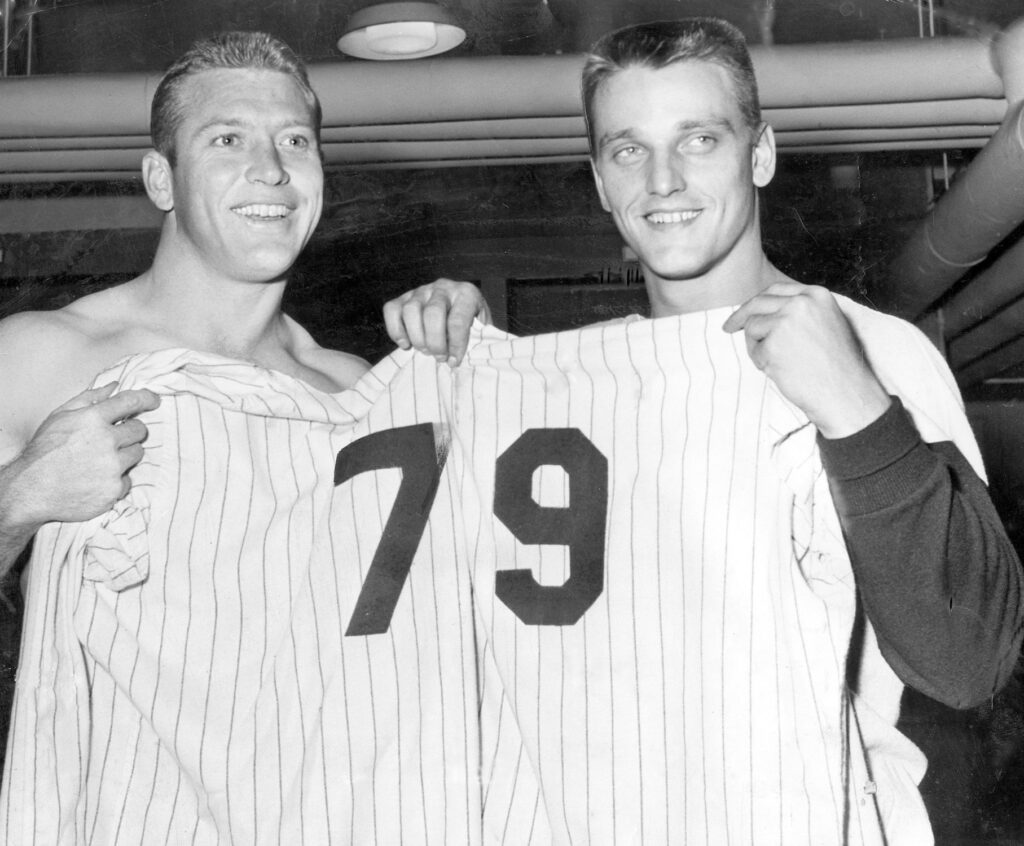
Roger Maris in the pinstripes
Roger Maris was entrusted with the prestigious duty of taking up the right field position, succeeding the legendary Hank Bauer, when he donned the New York Yankees’ uniform at the age of twenty-five. This was an exciting prospect as he was set to join forces with the iconic Mickey Mantle, forming a formidable duo in a lineup determined to restore the Bronx Bombers to their customary reign at the pinnacle of baseball.
At first, Roger Maris’ transition to the Yankees appeared to be a dream come true. He hit the ground running, smashing two home runs in his very first game wearing the pinstripes. By early August, he had already accumulated over thirty home runs and driven in more than ninety runs, while the Yankees, following a sluggish start, reasserted their dominance in the American League. They clinched the pennant, finishing eight games ahead of a surprising Baltimore Orioles squad.
However, Roger Maris encountered a series of late-season injuries that limited his playing time during the latter part of the year. Despite these setbacks, the left-handed slugger concluded the season with an impressive tally of thirty-nine home runs, narrowly trailing the league leader and his teammate, Mickey Mantle, who hit forty home runs. His exceptional performance did not go unnoticed, as he led the league with an impressive 112 RBIs, a remarkable feat that earned him the American League Most Valuable Player Award. Not only did his regular season contributions earn him a place in his second All-Star game, but Roger Maris also received a Gold Glove Award, a testament to his defensive prowess.
In the World Series, Roger Maris played a relatively minor role in the inconsistent Yankees’ offense. He managed a batting average of .267 and contributed two home runs to the tally. Despite outscoring the Pittsburgh Pirates 55-24 in the Series, including dominant victories with scores like 16-3, 10-0, and 12-0, the Yankees suffered a heartbreaking loss in the historic ninth inning.
The 1961 season marked a change in leadership, with long-time Yankees manager Casey Stengel being replaced by former Yankees catcher Ralph Houk. The change didn’t yield immediate dividends, as the Yankees played only slightly above .500 through the first two months of the season. However, it soon became evident that the 1961 season would be remembered for an unparalleled surge in hitting power, with the New York Yankees positioned at the heart of this offensive explosion.
Roger Maris had a slow start in joining the power-hitting frenzy, not launching his first home run until the Yankees’ eleventh game of the season. Initially, the media buzz centered around Mantle’s remarkable start and the potential to challenge Babe Ruth’s single-season home run record. However, by the end of May, Roger Maris had overcome his early-season slump, hitting nine home runs in the last two weeks of the month, bringing his total to twelve, a mere two behind his switch-hitting teammate, Mantle. Building upon this resurgence, Roger Maris soon surged ahead. From May 17, when he hit his fourth home run, through June 22, he astonishingly hammered twenty-four home runs in just thirty-eight games. This streak was rivaled only by Babe Ruth’s twenty-four home runs in forty-one games in 1927.
As the month of June unfolded, Roger Maris maintained his prolific pace, slamming fifteen home runs throughout the entire month. Bolstered by Whitey Ford‘s remarkable 8-0 record-setting month and the combined slugging power of the “M&M boys,” the New York Yankees found themselves firmly in the heart of the American League race.
The media’s spotlight on Maris and Mantle reached unprecedented levels in September, particularly for Maris. While Mantle had grown accustomed to dealing with the New York press since he succeeded Joe DiMaggio, Roger Maris, a small-town, plain-spoken individual, found the attention uncomfortable. He experienced periods of four or five games without a home run, only to follow them with impressive displays of power. As September began with a crucial three-game series against the Detroit Tigers, who trailed by just one and a half games, Maris had fifty-one home runs to Mantle’s forty-eight.
Recognizing the significance of this critical series, the Yankees swept the games, with Maris and Mantle each contributing two home runs. This series marked the start of a thirteen-game winning streak that effectively secured the American League championship. With the league title secured, the baseball world shifted its focus to the ongoing pursuit of Babe Ruth’s record.
The anticipation grew even more intense when Commissioner Ford Frick, a close friend of Ruth’s, declared that any new record had to be achieved within the old 154-game schedule. This decision stirred further debate about his impartiality and objectivity, adding extra pressure on Maris and Mantle. Roger Maris continued to chase the record, hitting his fifty-sixth home run on September 9. However, the fifty-seventh didn’t come until a week later, and the fifty-eighth arrived in the 152nd game. The Yankees then traveled to Baltimore, Babe Ruth’s hometown. Roger Maris initially struggled, but he eventually hit his fifty-ninth home run off Milt Pappas in the third inning of the 154th game. Subsequent at-bats yielded only one long foul ball and a deep drive to right-center field that was caught by Earl Robinson in front of the fence.
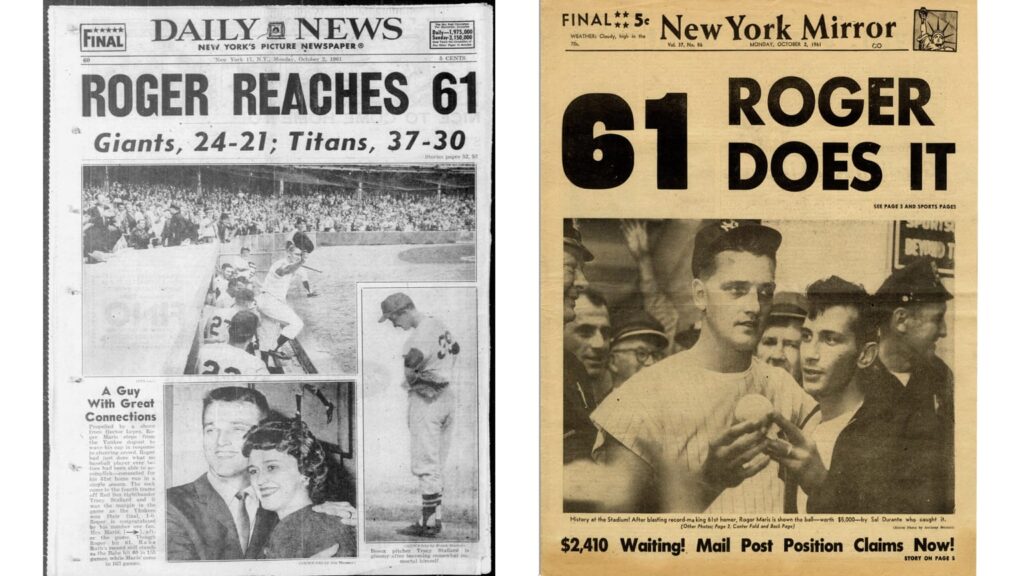
While Roger Maris became only the second player in major league history to hit fifty-nine home runs, he would not break the record according to Commissioner Frick’s directives. However, the 1961 season included 162 games, and Roger Maris utilized the full schedule to his advantage. Back at Yankee Stadium, he achieved his sixtieth home run against Baltimore right-hander Jack Fisher on September 26. Finally, on October 1, the chase culminated. In front of a crowd of just 23,154 fans eager to witness history, Roger Maris launched his sixty-first home run, surpassing any major leaguer’s single-season record. He accomplished this feat against Red Sox right-hander Tracy Stallard in the bottom of the fourth inning, and it was the sole run in a 1-0 victory. This grueling journey had come to an end, marking a historic achievement for Maris.
The story didn’t conclude there. The Yankees proceeded to the World Series, which played out as a short, five-game series. Despite Maris’s exhaustion and a .105 batting average, the rest of the Yankee lineup, which had set a major league record with 240 home runs, compensated for his performance. They secured a decisive victory against the Cincinnati Reds.
The offseason that followed was a whirlwind of accolades and recognition for Maris. He received a second Most Valuable Player Award, and he was honored with the prestigious Hickok Belt, awarded to the outstanding professional athlete of the year. This winter banquet circuit was a fitting celebration of his remarkable accomplishments.
Post-Record Seasons
While matching the historic achievements of the 1961 season was a formidable task, Roger Maris remained a valuable asset for the New York Yankees in 1962. Despite the exceptional buzz that surrounded 1961, Maris willingly accepted a more subdued role in the shadows of his teammate, Mickey Mantle, who secured his third and final MVP Award that year. Roger Maris delivered a strong performance, hitting .256, driving in 100 runs for the third consecutive season, and launching thirty-three home runs. In 157 games, he remained a consistent presence, particularly considering Mantle, despite his heroics, missed nearly 40 games due to injuries. While his batting average might have dipped slightly, his all-around skills remained crucial for the aging Yankees. Even though he only managed a .174 batting average in the World Series against the Giants, he still led the team in runs batted in with five.
In 1963, injuries became a significant challenge for Roger Maris, limiting his participation to just ninety games. Despite the setbacks, he still managed to belt twenty-three home runs while maintaining a .269 batting average. The Yankees secured their fourth consecutive American League pennant, but their offense faltered in the World Series against the Dodgers, led by Sandy Koufax, who allowed only four runs and swept the defending champions. Roger Maris, who could only participate in two games, struggled to find his form against the Dodgers’ pitching staff.
Moving into 1964, Roger Maris made a strong comeback. He played in 141 games, hitting .281 with twenty-six home runs. While the Yankees initially faced challenges under the new leadership of manager Yogi Berra, they clinched the American League title by a single game over the White Sox. However, in the World Series against the young and formidable St. Louis Cardinals, led by the dominant right-hander Bob Gibson, the aging Yankees fell short, losing in seven games. Roger Maris, for his part, struggled, managing only a .200 batting average against the Cardinals.
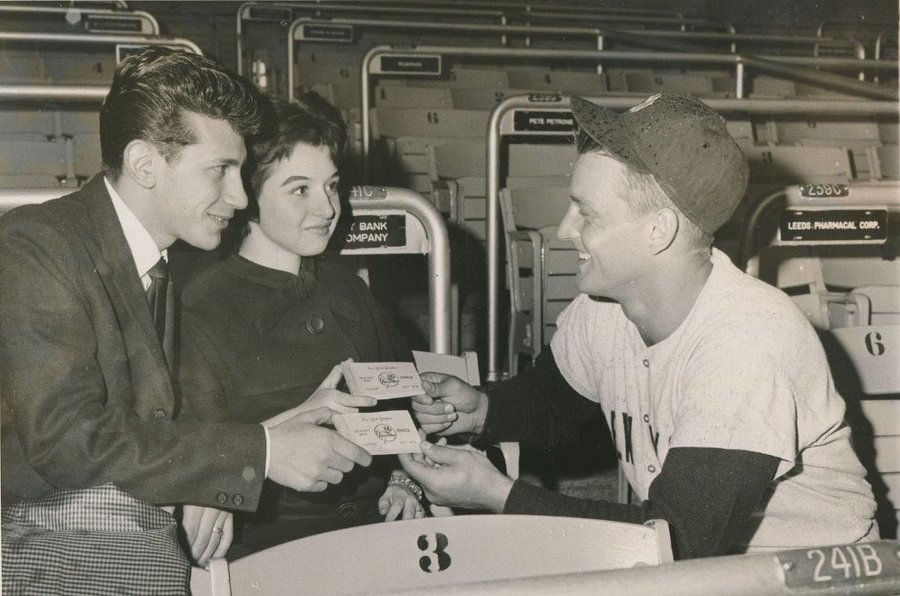
The 1965 season marked a significant downturn for the Yankees, as they finished in sixth place, their worst finish since 1925. Roger Maris faced his own set of struggles, contending with a misdiagnosed broken hand that limited his appearances to just forty-six games, the lowest count in his career. Injuries also affected Mantle and catcher Elston Howard, and Roger Maris’ inability to contribute when the team needed him added to the growing tension between him and the press. The strained relationship that had made parts of 1961 challenging resurfaced, and his inability to replicate the feats of Babe Ruth, Mickey Mantle, or even his own past performances left many fans and the media feeling disappointed and frustrated.
The 1966 season offered little respite, as injuries continued to plague Roger Maris, restricting him to fewer than 120 games. His thirteen home runs, forty-three RBIs, and a .233 batting average were a far cry from his MVP years, casting a shadow over his once-stellar career.
Roger Maris with the Cardinals
As the New York Yankees, an aging team, grappled with a collective decline, much of the blame seemed to be directed at their former home run champion, Roger Maris. His injury-plagued performances in the middle part of the decade had certainly played a part in the team’s struggles. Consequently, the Yankees, who were in a state of flux, made the decision to trade Roger Maris to the St. Louis Cardinals in exchange for third baseman Charley Smith.
St. Louis turned out to be the perfect destination for Roger Maris to reinvigorate and ultimately bring his illustrious career to a close. He was viewed as a seasoned veteran who could fill one of the few gaps on a talented squad, many of whose members had played pivotal roles in the team’s 1964 World Series victory over the Yankees. His arrival allowed the Cardinals to move right fielder Mike Shannon to third base, ultimately enhancing their offensive capabilities. Roger Maris became a part of an all-star-laden team, led by future Hall of Famers such as Bob Gibson, Lou Brock, and Orlando Cepeda, along with the free agent catalyst Curt Flood and the future announcer Tim McCarver. The team was managed by Cardinal legend Red Schoendienst. He comfortably transitioned into a more supportive role, away from the intense spotlight that he had never actively sought or desired during his tenure in New York.
In his inaugural season with the Cardinals, Roger Maris upheld a batting average of .261 in 125 games, contributing fifty-five runs batted in. He continued to exemplify his trademark combination of consistent and savvy play both in the field and on the base paths. It was a triumphant comeback, and while Bob Gibson’s pitching accomplishments undeniably earned him the World Series MVP award, Roger Maris concluded the year with the best World Series performance of his career. He drove in seven runs and maintained an impressive .385 batting average, a critical contribution to the Cardinals securing their second championship in four years.
The 1968 season marked the farewell tour of his baseball career. Once again plagued by injuries, a situation that undoubtedly hastened his decision to retire, he was limited to just 100 games. Nevertheless, he made a valiant effort to contribute to another championship quest as the Cardinals defended their National League crown, finishing nine games ahead of the Giants. In a poignant departure from his final days in New York, the Cardinals celebrated his retirement with a ceremony before the home finale against the Astros. Unfortunately, Roger Maris’ career came to a close on a disappointing note, as the Detroit Tigers, led by left-hander Mickey Lolich, thwarted the Cardinals’ efforts to repeat as World Champions. For Maris, who hit .158 against the Tigers, the Series marked the conclusion of a career that had spanned seven World Series appearances in twelve major league seasons. He had been a central figure on seven pennant-winning teams and three World Championship teams, a record that remained unmatched by any other player in the 1960s.

Life after retirement
Following the 1968 World Series, Cardinals owner Gussie Busch played a pivotal role in assisting Roger Maris in the establishment of a beer distributorship in Gainesville, Florida. The Maris Distributing Company operated as a distributor for Anheuser-Busch beer, covering the central Florida area. In 1973, the New York Yankees underwent a change in ownership, with the arrival of George Steinbrenner, a man determined to restore the team to its former glory and revive the Yankees’ connection with their championship heritage.
Steinbrenner moved the headquarters of his company, American Shipbuilding, from Cleveland to Tampa in 1976 and made a deliberate effort to rekindle his relationship with the former Yankee great, Roger Maris. A spring exhibition game in 1977 provided the perfect opportunity for a meeting between the two. Initially declining Steinbrenner’s invitation to participate in the 1977 Old-Timers Game, Roger Maris surprised everyone in April 1978 by flying to New York to join Mickey Mantle in raising the 1977 American League pennant. The crowd, consisting of over 44,000 fans who had not been given any advance notice, reacted with admiration and appreciation as Maris stepped onto the field. He may have been a bit heavier than his playing days, but he still sported his trademark crew cut. The chants of “Roger, Roger” ringing in his ears signified that at least some of the ghosts of 1961 had finally been laid to rest.
By 1983, Roger Maris was savoring a more relaxed lifestyle, overseeing his thriving beer distribution business in Florida, and enjoying his time on the golf course with friends and family. However, around Thanksgiving, he began experiencing persistent headaches, which continued into early 1984. Initially, he paid little attention to them. But when he started having intermittent breathing difficulties and noticed an increasing number of lumps on his body, he decided it was time to seek medical attention.
The doctor’s diagnosis delivered the news that Roger Maris was battling lymphoma, a form of cancer that affects the lymph glands. While the initial prognosis offered hope for a full recovery, he wasted no time and commenced chemotherapy, holding onto his optimism. His spirits received an additional boost when it was announced that the 1984 Old-Timers Game at Yankee Stadium would include the retirement of his number nine and the installation of a plaque in his honor in Monument Park. Donning a complete Yankee uniform, Roger Maris made his appearance at the stadium where the unveiling of the plaque commemorated him as “A great player and author of one of the most remarkable chapters in the history of major league baseball.” Maris struggled to hold back tears as he expressed his gratitude to his friends, former teammates, and the new generation of fans who had warmly received him.
Throughout the summer, it appeared that Roger Maris was responding positively to his treatment, and the cancer seemed to be in remission. In April 1985, he made a final visit to Yankee Stadium to receive the team’s Lou Gehrig Pride of the Yankees Award at a dinner held on the eve of the season opener. The following day, alongside Mantle, who had become a frequent caller to check on his old teammate’s health, Roger Maris participated in special opening day activities. It had been twenty-five years since Maris first donned the pinstripes, and the resounding ovation upon his introduction confirmed that, despite the challenges he had faced, Roger Maris had rightfully earned a special place in Yankee history.
Tragically, not long after returning to Gainesville, his health took a turn for the worse. On Saturday, December 14, 1985, at the age of fifty-one, Roger Maris passed away. His funeral in Fargo and the memorial service in St. Patrick’s Cathedral in New York served as impromptu Yankee reunions. The outpouring of emotion and the presence of the baseball elite made it abundantly clear that Roger Maris’ contributions throughout his career had left an enduring Yankee legacy.
The Legacy
- Roger Maris played in seven World Series, more than any other player in the 1960s, with three wins.
- He had six children with his wife Patricia: Roger Jr., Kevin, Richard, Susan, Randy, and Sandra, along with 15 grandchildren and 4 great-grandchildren.
- His home run record was challenged in 1998 by Mark McGwire and Sammy Sosa, with sold-out crowds following the race, showing a shift in public reaction to such records.
- Roger Maris was a versatile ballplayer known for more than just home runs; he excelled in fielding, baserunning, and contributing to his team’s victories.
- His sixty-first home run in 1961 not only set the record but was also the winning run in a 1-0 season finale, reflecting his dedication to winning.
- Roger Maris held the AL record for most home runs in a season until Aaron Judge broke it with his 62nd home run in 2022.
- In 1964, he received North Dakota’s Roughrider Award.
- He was inducted into the North Dakota American Legion Baseball Hall of Fame in 1977.
- A plaque dedication and No. 9 retirement ceremony in Monument Park at Yankee Stadium took place on July 22, 1984, with the plaque calling Maris “A great player and author of one of the most remarkable chapters in the history of major league baseball.”
- The Roger Maris Museum opened in 1984 in Fargo, and the Roger Maris Cancer Center at Sanford Hospital in Fargo is named after him.
- The United States Postal Service issued a “Roger Maris, 61 in 61” commemorative stamp on September 17, 1999, making him one of only 30 baseball players with their own commemorative U.S. postage stamp.
- Roger Maris was inducted into the Baseball Reliquary’s Shrine of the Eternals in 2009.
- Newman Signs Inc. continued to use billboard signage at Newman Outdoor Field in Fargo, declaring Maris as the “Legitimate Home Run King” as of 2010.
- On September 24, 2011, the Yankees celebrated the 50th anniversary of Roger Maris’ single-season home run record at Yankee Stadium.
- In October 2022, Roger Maris was inaugurated into the Croatian-American Sports Hall of Fame.
Greatest Moments and Awards
- 2x AL MVP (1960, 1961)
- American League All-Star (7 times)
- American League Gold Glove Award (RF) (1 time)
- Hickok Belt (1961)
- Sporting News Player of the Year (1961)
- 3x World Series champion (1961, 1962, 1967)
- AL home run leader (1961)
- 2× AL RBI leader (1960, 1961)
- New York Yankees No. 9 retired
- Monument Park honoree
- Single-season home run record (61, 1961)
- American League leader in home runs, runs scored, and total bases (1961)
- American League leader in runs batted in and extra-base hits (1960, 1961)
- AL leader in fielding average as right fielder (1960, 1964)
- National League leader in fielding average as right fielder (1967)
- Lifetime 5.39 home run percentage
FAQs
How did Roger Maris die?
Roger Maris died of non-Hodgkin’s lymphoma on December 14, 1985, in Houston, Texas
When did Roger Maris hit 61?
Maris hit his 61st home run on October 1, 1961.
When did Roger Maris die?
Maris died on December 14, 1985.
How old was Roger Maris when he died?
Maris was 51 years old when he died.
How many games did Roger Maris play in 1961?
Maris played 161 games in 1961.
How many games did it take Roger Maris to hit 61st home runs?
It took Maris 161 games to hit his 61st home run in 1961.
Who broke Roger Maris’ record?
Mark McGwire broke Maris’ record by hitting 70 home runs in 1998.
Why is Roger Maris not in the Hall of Fame?
Roger Maris is not enshrined in the Hall of Fame because he exhausted his eligibility on the Hall of Fame ballot after making the maximum allowed number of attempts.
Who caught Roger Maris’ 61st home?
A 19-year-old fan, Sal Durant caught Maris’ historic 61st home run ball.
What type of cancer did Roger Maris die from?
Maris died of non-Hodgkin’s lymphoma.
How many home runs did Roger Maris hit in 1962?
Maris hit only 33 home runs in 1962, compared to 61 in 1961.
How many home runs did Roger Maris hit in his career?
Maris’ MLB career concluded with 275 home runs to his name.
How much is Roger Maris’ 61st home run ball worth?
The estimated worth of Roger Maris’ 61st home run ball falls in the range of $500,000 to $1 million.
How many at-bats did Roger Maris have in 1961?
Maris had 590 at-bats in 1961.
Who pitched Roger Maris’ 61st home run?
Boston Red Sox’ Tracy Stallard pitched to Maris when he hit his 61st home run.
What position did Roger Maris play?
Maris played in the outfield.
How many children did Roger Maris have?
Roger Maris had six children.
How much is a Roger Maris baseball card worth?
The worth of a Roger Maris baseball card varies according to factors such as the year, condition, and rarity of the card. Some of his cards have been sold for substantial sums, reaching into the thousands of dollars.
How many games did Roger Maris play?
Maris played a total of 1,436 games in his career.
What number was Roger Maris?
Maris wore jersey number 9.
Who is Roger Maris Jr.?
Roger Maris Jr. is the son of Roger Maris.
What was Roger Maris’ batting average in 1961?
In 1961, Maris recorded a batting average of .269.
Where is Roger Maris buried?
Maris is buried at Holy Cross Cemetery in Fargo, North Dakota.
How old was Roger Maris in 1961?
Maris was 27 years old in 1961 when he etched a new chapter in MLB history.
How many packs of cigarettes did Roger Maris smoke?
Roger Maris was known to smoke a staggering five packs of cigarettes per day throughout the 1961 season, frequently seen with a beer bottle in one hand and a lit cigarette in the other.
How many times did Roger Maris hit 40 or more home runs in a season?
Maris achieved the milestone of hitting 40 or more home runs in a season on two occasions during his career, accomplishing this feat in 1960 and 1961.
When did Mickey Mantle and Roger Maris have a home run battle?
Mickey Mantle and Maris had a home run battle in 1961.
What is the movie about Roger Maris and Mickey Mantle?
The movie about Maris and Mantle is called “61.”
Which two baseball players were chasing Roger Maris’ home run record in 1998?
Mark McGwire and Sammy Sosa were chasing Maris’ home run record in 1998.
What were the jersey numbers for Mickey Mantle and Roger Maris?
Mickey Mantle wore jersey number 7, and Maris wore jersey number 9.
In what year did Mickey Mantle and Roger Maris vie for home runs hit?
Mantle and Maris vied for home runs hit in 1961.
Why did Roger Maris change his name?
Roger Maris did not change his name. His birth name was Roger Eugene Maris, but it was recorded as “Maras” on his birth certificate due to a spelling error.
How come Roger Maris doesn’t get the credit he deserves?
Roger Maris may not have received the credit he deserved due to various factors. He encountered negative press, criticism of his talent, and internal pressures, all of which could have contributed to his not receiving the recognition he rightfully earned.
How much time do I need at Roger Maris Museum?
Visiting the Roger Maris Museum in Fargo, North Dakota takes approximately one hour to explore.
Where in the batting order did Roger Maris bat?
Roger Maris usually batted third for most of his career.
What was Roger Maris’ wife’s maiden name?
Roger Maris’ wife’s maiden name was Patricia Susan Moran.
What kind of bat did Roger Maris use?
Maris used a Hillerich & Bradsby (Louisville Slugger) bat.
Were Roger Maris and Mickey Mantle friends?
Roger Maris and Mickey Mantle were teammates and had a friendly rivalry, but they were not particularly close friends. While they respected each other as players, their relationship was more of a professional one within the context of the game.
Where was Roger Maris from?
Maris was from Hibbing, Minnesota.
Who did the Yankees give to KC to get Roger Maris?
The New York Yankees traded Don Larsen, Hank Bauer, and Norm Siebern to the Kansas City Athletics to acquire Roger Maris.
What brand did Roger Maris smoke?
Maris smoked unfiltered Camel cigarettes.
Who fell behind Roger Maris in 1961 for the home run record?
Mickey Mantle fell behind Maris in 1961 for the home run record.
How many seasons did Roger Maris play for the NY Yankees?
Maris played for the New York Yankees for seven seasons, from 1960 to 1966.
What year was Roger Maris MVP?
Maris was MVP in 1960 and 1961.
When was Rafer Johnson & Roger Maris named athletes of the year?
Rafer Johnson and Roger Maris were named athletes of the year in 1960 and 1961, respectively.
Why does Roger Maris’ record have an asterisk next to it?
Roger Maris’ record had an asterisk next to it because he hit his 61 home runs in a 162-game season, whereas Babe Ruth hit his 60 home runs in a 154-game season. The asterisk was used by some to denote the difference in the length of the seasons when comparing the two records.
How many home runs did Roger Maris hit in 1960?
Maris hit 39 home runs in 1960.
When was Roger Maris’ number retired?
Roger Maris’ number 9 was retired by the New York Yankees on July 22, 1984.
Who did Roger Maris room with?
Roger Maris roomed with fellow Yankees players Bob Cerv and Mickey Mantle during his time with the team.
How much did Roger Maris make in 1961?
Maris’ salary in 1961 was $32,000.
How many people were at the game when Roger Maris hit his 61st home run?
Roger Maris hit his 61st home run in front of a crowd of 23,000 people.
Roger Maris career graph
| Hall of Fame | All-Star Game | Awards | MVP (rank, share) |
| 1975 BBWAA (19.3%) | 1959-2 (RF) | 1960 AP All-Star | 1960 AL (1, 67%) |
| 1976 BBWAA (22.4%) | 1960-1 (RF) | 1960 AL MVP | 1961 AL (1, 72%) |
| 1977 BBWAA (21.4%) | 1960-2 (RF) | 1960 TSN All-Star | 1964 AL (25, 1%) |
| 1978 BBWAA (21.9%) | 1961-1 (RF) | 1961 AP All-Star | 2 MVPs |
| 1979 BBWAA (29.4%) | 1961-2 * | 1961 Major League Player of the Year | 1.40 Career Shares (182nd) |
| 1980 BBWAA (28.8%) | 1962-1 (CF) | 1961 AL MVP | |
| 1981 BBWAA (23.4%) | 1962-2 (CF) | 1961 TSN All-Star | |
| 1982 BBWAA (16.6%) | |||
| 1983 BBWAA (18.4%) | |||
| 1984 BBWAA (26.6%) | |||
| 1985 BBWAA (32.4%) | |||
| 1986 BBWAA (41.6%) | |||
| 1987 BBWAA (42.6%) | |||
| 1988 BBWAA (43.1%) | |||
| Gold Gloves | Wins Above Replacement | WAR Position Players | Offensive WAR |
| 1960 AL (RF) | 1960 AL 7.5 (1st) | 1960 AL 7.5 (1st) | 1960 AL 5.6 (2nd) |
| 1961 AL 6.9 (5th) | 1961 AL 6.9 (5th) | 1961 AL 7.0 (3rd) | |
| Slugging % | On-Base Plus Slugging | Games Played | At Bats |
| 1960 AL .581 (1st) | 1960 AL .952 (2nd) | 1958 AL 150 (7th) | 1958 AL 583 (5th) |
| 1961 AL .620 (4th) | 1961 AL .993 (5th) | 1961 AL 161 (5th) | |
| 1962 AL .485 (9th) | 1962 AL .840 (10th) | ||
| Career .476 (244th) | |||
| Plate Appearances | Runs Scored | Total Bases | Doubles |
| 1958 AL 637 (8th) | 1958 AL 87 (7th) | 1958 AL 251 (10th) | 1962 AL 34 (5th) |
| 1961 AL 698 (7th) | 1960 AL 98 (2nd) | 1960 AL 290 (2nd) | |
| 1961 AL 132 (1st) | 1961 AL 366 (1st) | ||
| 1962 AL 286 (7th) | |||
| Triples | Home Runs | Runs Batted In | Bases on Balls |
| 1959 AL 7 (3rd) | 1958 AL 28 (7th) | 1960 AL 112 (1st) | 1961 AL 94 (8th) |
| 1960 AL 7 (3rd) | 1960 AL 39 (2nd) | 1961 AL 141 (1st) | 1962 AL 87 (9th) |
| 1961 AL 61 (1st) | 1962 AL 100 (8th) | ||
| 1962 AL 33 (5th) | |||
| Career 275 (198th) | |||
| Strikeouts | Adjusted OPS+ | Runs Created | Adj. Batting Runs |
| 1957 AL 79 (10th) | 1960 AL 160 (2nd) | 1960 AL 111 (2nd) | 1960 AL 40 (3rd) |
| 1958 AL 85 (6th) | 1961 AL 167 (4th) | 1961 AL 138 (4th) | 1961 AL 54 (4th |
| Career 127 (238th) | 1962 AL 107 (7th) | ||
| Adj. Batting Wins | Extra Base Hits | Times On Base | Offensive Win % |
| 1960 AL 3.9 (3rd) | 1958 AL 51 (8th) | 1961 AL 260 (6th) | 1959 AL .659 (9th) |
| 1961 AL 5.2 (4th) | 1960 AL 64 (1st) | 1960 AL .744 (2nd) | |
| 1961 AL 81 (1st) | 1961 AL .735 (6th) | ||
| 1962 AL 68 (3rd) | 1962 AL .650 (10th) | ||
| 1964 AL .684 (9th) | |||
| Career .650 (225th) | |||
| Hit By Pitch | Sacrifice Flies | Intentional Bases on Balls | Power-Speed # |
| 1961 AL 7 (7th) | 1961 AL 7 (10th) | 1962 AL 11 (3rd) | 1957 AL 10.2 (9th) |
| 1964 AL 6 (9th) | |||
| AB per HR | Outs Made | Base-Out Runs Added (RE24) | Win Probability Added (WPA) |
| 1958 AL 20.8 (9th) | 1958 AL 454 (6th) | 1960 AL 54.24 (2nd) | 1960 AL 5.7 (2nd) |
| 1960 AL 12.8 (1st) | 1961 AL 71.59 (4th) | 1961 AL 7.0 (4th) | |
| 1961 AL 9.7 (2nd) | Career 270.40 (213th) | Career 26.1 (182nd) | |
| 1962 AL 17.9 (7th) | |||
| 1964 AL 19.7 (9th) | |||
| Career 18.5 (108th) | |||
| Situ. Wins Added (WPA/LI) | Championship WPA (cWPA) | Base-Out Wins Added (REW) | Total Zone Runs |
| 1960 AL 5.1 (2nd) | 1960 AL 9.8 (4th) | 1960 AL 5.4 (2nd) | 1960 AL 19 (2nd) |
| 1961 AL 7.6 (3rd) | 1961 AL 18.8 (3rd) | 1961 AL 7.0 (4th) | |
| Career 26.7 (174th) | 1963 AL 4.0 (9th) | Career 27.2 (204th) | |
| 1964 AL 5.5 (6th) | |||
| 1968 NL 2.4 (9th) | |||
| Career 49.7 (63rd) | |||
| Double Plays Turned as LF (s.1901) | Assists as CF (s.1901) | Errors Committed as CF (s.1901) | Double Plays Turned as CF (s.1901) |
| 1957 AL 1 (3rd) | 1957 AL 7 (3rd) | 1957 AL 5 (3rd) | 1957 AL 1 (5th) |
| 1958 AL 1 (5th) | |||
| Def. Games as RF (s.1901) | Putouts as RF (s.1901) | Assists as RF (s.1901) | Errors Committed as RF (s.1901) |
| 1959 AL 114 (4th) | 1959 AL 222 (3rd) | 1958 AL 11 (4th) | 1958 AL 6 (1st) |
| 1960 AL 127 (4th) | 1960 AL 253 (3rd) | 1959 AL 7 (2nd) | 1959 AL 6 (2nd) |
| 1961 AL 150 (1st) | 1961 AL 242 (5th) | 1960 AL 6 (3rd) | 1961 AL 8 (1st) |
| 1967 NL 118 (5th) | 1967 NL 221 (5th) | 1961 AL 9 (4th) | |
| Career 1,151 (64th) | Career 2,017 (66th) | ||
| Double Plays Turned as RF (s.1901) | Def. Games as OF | Assists as OF | Errors Committed as OF |
| 1958 AL 3 (3rd) | 1958 AL 146 (4th) | 1958 AL 15 (2nd) | 1957 AL 7 (4th) |
| 1959 AL 4 (1st) | 1961 AL 160 (2nd) | 1958 AL 9 (1st) | |
| 1967 NL 1 (5th) | 1959 AL 6 (5th) | ||
| Double Plays Turned as OF | Total Zone Runs as LF (s.1953) | Total Zone Runs as CF (s.1953) | Range Factor/9Inn as CF (s.1948) |
| 1957 AL 2 (3rd) | 1957 AL 5 (3rd) | 1958 AL 7 (4th) | 1957 AL 2.82 (4th) |
| 1958 AL 4 (2nd) | 1962 AL 3 (5th) | ||
| 1959 AL 4 (1st) | |||
| Range Factor/Game as CF (s.1901) | Total Zone Runs as RF (s.1953) | Range Factor/9Inn as RF (s.1948) | Range Factor/Game as RF (s.1901) |
| 1957 AL 2.45 (5th) | 1959 AL 5 (3rd) | 1967 NL 10 (2nd) | 1958 AL 1.67 (5th) |
| 1960 AL 18 (1st) | 1960 AL 2.11 (3rd) | 1959 AL 2.01 (3rd) | |
| 1963 AL 7 (5th) | 1963 AL 2.12 (3rd) | 1960 AL 2.04 (2nd) | |
| 1964 AL 9 (2nd) | 1964 AL 1.92 (4th) | 1962 AL 1.56 (5th) | |
| 1967 NL 10 (2nd) | 1967 NL 2.18 (3rd) | 1963 AL 1.93 (3rd) | |
| 1968 NL 5 (3rd) | 1968 NL 2.33 (3rd) | 1964 AL 1.85 (4th) | |
| 1967 NL 10 (2nd) | 1968 NL 2.06 (3rd) | ||
| Fielding % as RF (s.1901) | Total Zone Runs as OF (s.1953) | Range Factor/Game as OF | Fielding % as OF |
| 1959 AL .974 (4th) | 1960 AL 19 (1st) | 1957 AL 2.46 (5th) | 1962 AL .991 (5th) |
| 1960 AL .989 (1st) | 1967 NL 9 (3rd) | 1964 AL .996 (2nd) | |
| 1961 AL .969 (5th) | 1968 NL 5 (4th) | 1967 NL .991 (2nd) | |
| 1964 AL .995 (1st) | Career 45 (96th) | ||
| 1967 NL .991 (1st) | |||
| Career .983 (68th) |
Sources: SABR, Baseball-Reference
- Categories: Roger Maris, Yankees legends
- Tags: Roger Maris, Yankees legends


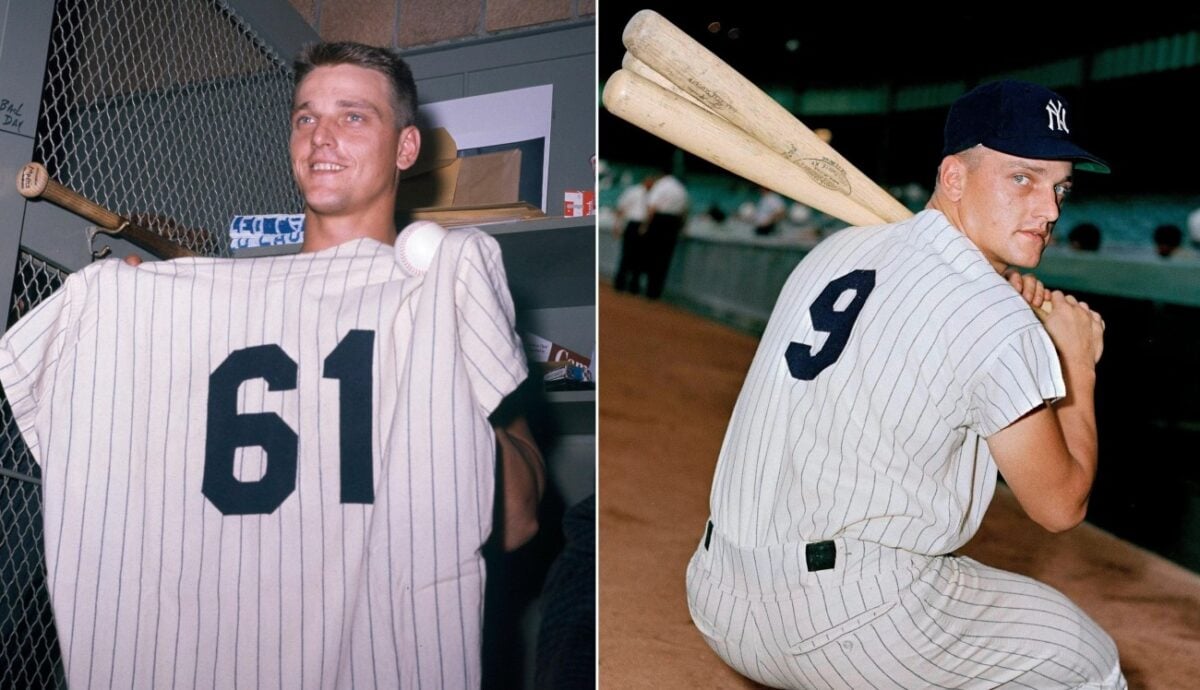
 Follow Us
Follow Us









